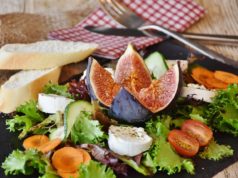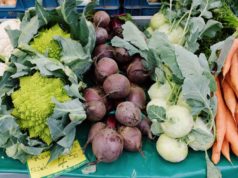The world of wine can seem overwhelming but these tips will help you discover which wines will go best with your dish of choice.
1. Keep in Mind That Not All Wines Are Vegan
This may come as a surprise to some people, considering that wine is made from grapes. Yet there are some manufacturing processes that incorporate animal products into the mix. Therefore, those following a vegan diet need to be sure that their drink choice is suitable for their dietary concerns.
While some wines are made by pressing grapes and fermenting the juice, others are made with a process called fining. This involves adding fining agents such as crustacean shell fiber, egg whites, gelatin, and fish and milk protein to the wine. These agents are mostly used in younger wines that haven’t had time to age and get rid of tannins and large proteins.
The good news is that in most cases you can visit the manufacturer or wine brand’s website to see if their vintages are vegan or not. It’s just something to be mindful of, especially when dining out.
2. Understand the Key Elements of Wine Varieties
Before you go about pairing wine with your vegan recipes, it helps to get a firm understanding of how certain wines bring out different flavors. For example, many of the red wines we know and love are dry, such as Cabernet Sauvignon, Merlot, and Pinot Noir.
Chardonnay, a white wine, tends to be sweet as is Moscato and Sauvignon Blanc. Dry champagne and Prosecco tend to be semi-sweet. Of course, there are varieties that branch out from these red and white wines so it’s often a matter of taste and what you’re eating.
3. Pair Food and Wine Based on Body
For wine novices, the body of a wine refers to the way that the drink feels in your mouth. There are three wine body specifications: light, medium, and heavy.
One good analogy for this is thinking of skim milk as light-bodied, whole milk as medium-bodied, and a milkshake as heavy-bodied. They feel different in your mouth, right? It’s the same concept with wine and knowing the bodies of different wines will help you pair them well with food.
A light-bodied wine will go best with pasta dishes or stir-fries because the beverage will not overpower the understated flavors of the food. Light-bodied wines such as Pinot Grigio and Merlot are also good for salads.
When eating something more substantial such as grilled veggies, vegan burgers, or potatoes, a heavier-bodied wine such as Sauvignon Blanc or Grenache is the way to go. Your main concern should be to not overpower the taste of the food with your wine choice.
For example, a robust, hearty wine won’t pair well with a delicate dish such as steamed veggies or an olive oil-based pasta. Likewise, light-bodied wines aren’t a good match for substantial meals such as baked potatoes and meat substitutes.
4. Explore the Two Approaches to Wine Pairings
When it comes to pairing wines with certain dishes, there are two main approaches that people tend to take. Some individuals want the wine to complement the food, meaning that lighter dishes get a light-bodied wine.
Other people prefer to get some contrast and balance by pairing a heavier-bodied wine with their light meals. It’s a matter of preference so it’s best to try out both methods to see which one you prefer. You might be more inclined towards one or the other depending on what you’re eating that particular night as well.
5. Stick to Traditional Pairings at First
If you’re not ready to delve into more exploratory wine tasting, then you can always try out these more traditional wine pairings. These are some of the most common food and wine combinations that include some of the most well-known wine choices.
Vegetable-heavy dishes that include lots of greens tend to pair well with a crisp white wine such as Sauvignon Blanc, which will complement the greenness of the food. For more earthy meals, a Pinot Noir is a sure bet. It’s got that light flavor that pairs perfectly with earthy vegan foods.
Sparkling wines such as Champagne and Moscato are ideal for dishes that have a lot of fatty foods in them such as avocado, oil, or nuts and seeds. They work well as palate cleansers so that your tongue doesn’t get weighed down by the full-bodied, fatty flavors.
For spicy dishes, you need something that will lighten things up. Go for a sweet Riesling or Gewürtztraminer. Finally, when in doubt, go with a dry rosé as it tends to pair nicely with many different types of meals.
6. Base Wine Pairings on the Taste Sensations of the Food
Did you know that your tongue has different receptors scattered on it for different flavor profiles? For instance, there is an area that tastes and reacts to bitter foods and other ones for sweet, salty, sour, and umami or savory. You can choose a wine based on the flavor profile of your meal.
Bitter foods such as arugula, dark chocolate, and kale go well with low-tannin sweet wines such as Barbera, Dolcetto, and Pinot Noir. Sour foods such as citrus fruits and tomato-based sauces pair well with high-acid wines such as Muscadet and Riesling.
For sweet desserts, go for a dessert wine such as Moscato or rosé. Salty foods will do well with acidic or fruity wines, perhaps Port or White Zinfandel.
7. Remember: There Are No Right or Wrong Answers
While these tips come from tried-and-true methods, they don’t have to be the be-all and end-all, especially if you’re not big into wine anyway. Sure, a sommelier wouldn’t stray from these rules but if you’re just looking for a yummy wine to add to your meal, you can go with whatever suits your personal tastes.
Just make sure to get a wine preserver like these, especially if you’re going to consume wine on a regular basis. Preserving wine once a bottle has been opened, is key to keeping that unique taste each bottle has.
These tips are meant to give you the best experience possible but if you know what you like and how you approach wine consumption, then it’s perfectly fine to stick to that. Drinking wine is an art, and as an artist, you’re allowed to create your own food and wine masterpiece. So go for it, the sky’s the limit!
Author Bio:
Lori Wade is a journalist from Louisville. She is a content writer for who have experience in small editions, Lori is now engaged in news and conceptual articles on the topic of home decor. If you are interested in gardening or lifestyle, you can find her on Twitter & LinkedIn. She has good experience and knowledge in the field. She has good experience and knowledge in the field. Check out her weekly article on gluten-free vegan alcoholic drinks here. Read and take over Lori’s useful insights!












